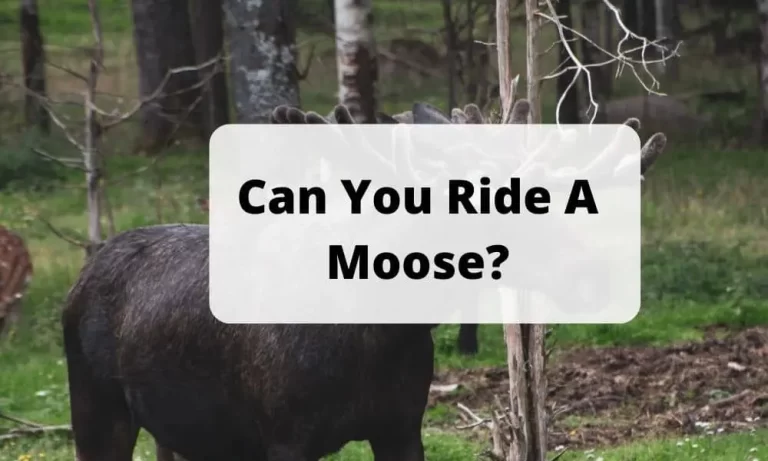Where Do Moose Live?
It is the largest deer species, standing between five and six-and-a-half feet. It is impossible to miss a bull because of its massive antlers, which can grow to about two meters in length. Males and females bellow at each other in the fall. One or two calves, each measuring 30 pounds, are born to females in the springtime.[acf field=”Schema”]

But where moose love to live, we always found them in the boreal forest along lakes, muskegs, and rivers. They can dive to depths of up to three meters to feed on aquatic plants, and they are adept swimmers. During the summer, moose can stay cool and avoid being bitten by insects like mosquitoes by swimming.
Here we will talk about moose where they live according to the map and all the other facts about them;
How Long Do Moose Live?
Usually, Moose live to 25 years in good health. A moose’s average life expectancy is 15 to 25 years. A few percent of bulls reach five years old, whereas cows might live to be ten or even twenty years old.
Where Do Moose Live on the Map?
Moose live in North America’s northern tier, encompassing Alaska and significant parts of Canada on the map. These places on the map are like home to moose. From the Mountain Ranges of Colorado to New England, you could find moose on every continent.
The Eurasian moose is a type of moose that lives in many places, including Scandinavia, Siberia, China, Kazakhstan, and Mongolia. They have even spread to parts of Europe, like Austria, but sadly, their population in Austria is very small, and they might not be around much longer.
Where Do Moose Prefer To Live?
Fermentation produces heat in moose, which means they don’t sweat as much as other animals. It is the primary reason moose prefer to live in cooler climates rather than hotter ones.
So they are discovered in forests or evergreen woods and the Rocky Mountains in the continent’s northern regions. They prefer locations near lakes, ponds, and rivers.
Where Do Moose Live During the Breeding Period of the Year?
In September and October, the male moose are known to fight over a female during mating season. It is most likely the winter season, and they used to live around the forest. They follow the disciplined process for breeding. The most enormous and powerful adult male herds up all the ladies and protects them when the other males fight with antlers to win the females.
When it comes to attracting a mate, the male and female birds create different noises during the breeding season. Once the couple agrees, they are believed to begin breeding independently. After mating season, these ladies are ignored because males mate with them several times.
It takes eight months for the mother-calf to give birth to one or two calves after mating. The newborn moose of this species remain with their mother until they are mature enough for independence, even though they are solitary. A mother’s milk provides nutrition for the baby, and it also serves as a predator deterrent. The baby’s father is never seen again.
Body Parts That Help Moose in Survival
Here we have a few characteristics they have which help them to live;
Hooves
Moose have four-toed hooves, similar to those of deer. Unlike the other two, two of them are huge and protrude into the front, while the other two are tiny and hidden. The animal’s hooves are shaped to walk over snow and soft terrain readily.
Every step causes the hooves to broaden and spread. It helps in increasing their contact area while swimming and allows them to move more naturally on snow.
Dewlap
Both the male and female moose are equipped with dewlaps. The male moose are larger than the females in Dewlap. The dewlap often referred to as a bell, is the pleated skin beneath the chin visible from the front. During the mating season, the males press the bell onto the cow, imparting their fragrance to the female and making her pregnant.
Fur
Moose has two layers of fur; one is hollow, and the other is on this hollow top. It comprises long guard hairs on the highest layer, with a soft undercoat on the bottom. The animal’s fur traps air, which helps to keep it warm and keeps it from losing heat.
Swimming is made more accessible by the addition of fur to provide buoyancy. Several reasons moose can swim so well are their thick fur coat.
Legs
This animal’s long, powerful legs make it a formidable opponent. Moose can run at rates of up to 35 mph due to its long and strong legs. Having legs is also advantageous when jumping over barriers in their path. Their legs are beneficial when they’re swimming and kicking predators.
Senses
Moose has really great senses by birth. A good pair of eyes is something that moose do not have, and their eyesight is particularly poor in this species. However, moose have developed to be well-adapted to their native environment. As far as we know, they have a strong sense of smell.
A moose can detect the presence of a predator from several kilometers away. Aside from having a fantastic sense of smell, they also have an almost flawless hearing. When these senses work together, the animal can promptly identify and flee from predators.
How Do They Communicate while Living Together?
They are extremely sensitive to smell and sound. They mainly communicate via chemical secretion by marking their territory on the ground or air. They also emit a roaring sound to warn others of impending danger.
When the cows moan and the bulls grunt during the mating season, they are at their most expressive. However, even though they are known to use their visual ability, their eyesight is not their most reliable mode of reception and communication. As a result, they are tactile, auditory, and chemically robust when communicating.
Are Living Moose Dangerous for Humans?
Even though this deer species appears to be deadly, they are not harmful unless provoked. Suppose these bulls or cows are harassed by humans, predators, or natural disasters like excessive snow.
In that case, moose are violent, resulting in deadly reactions that can kill five or more people in a single incident.
Conclusion
Moose live in places with lots of trees and water, like big forests and streams. In the summertime, they like to go swimming to stay cool and avoid getting bitten by pesky mosquitoes. We hope you enjoyed reading about moose and where they like to live!
Other Related Posts:





